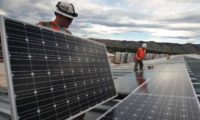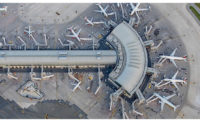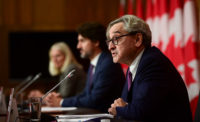Canada Launches $15B Infra Spend Plan, Despite Bottlenecks in Old One

Four years since Canada's government, newly led by Prime Minister Justin Trudeau, launched an ambitious campaign to overhaul infrastructure, from new roads and bridges to solar farms, it is still struggling to funnel federal dollars into actual projects, says a new national industry group coalition, citing official figures.
Made up of the Canadian Construction Association, Association of Consulting Engineering Companies – Canada, the National Trade Contractors Council of Canada, and Associated Equipment Distributors, the group says its aim is not to single-out the federal government for blame, but to help identify “bottlenecks” that have prevented money flow to projects.
Figures posted on Infrastructure Canada’s website are not reassuring—with the largest line item, called “multiple programs,” showing just $10 billion of $45 billion paid out so far by the federal government.
“The construction sector is ready to rebuild Canada’s economy, but all levels of government must deliver on infrastructure investments now to get projects started,” said Brian McGuire, CEO of Associated Equipment Distributors, in a statement.
'Permanent' Transit Fund
The effort has developed just as Trudeau ramps up a new infrastructure spend in a COVID-19 economic recovery move.
He announced on Feb. 10 a plan to to spend an additional $14.9 (C) billion over the next eight years on unspecified public transportation projects, with about $6 (C) billion in short-term funding beginning this year—and the rest earmarked for a new "permanen" transit project fund for cities to provide $3 (C) billion per year beginning in 2026, which officials say would add stability to long-term system planning.
Related to funding flow issues, John Gamble, president and CEO of ACEC – Canada, said project holdups are not necessarily the result of federal inaction but could be tied to issues at the local or provincial level,. “There is a concern about the pace at which the commitment of infrastructure dollars is turning into tangible projects,” Gamble said.
While Canada has committed a record amount of money for infrastructure work, confusion over the way tthe Ottawa government reports the amount of money that has reached actual projects has long been a problem.
Federal funding is typically not released until receipts for work are turned in, meaning there can be a significant lag between paper statistics and what is happening on a jobsite.
There also is confusion about how the federal government tracks infrastructure spending, with different line items overlapping in some cases and no apparent way to detach them, critics say.
The same “multiple programs” line item also appears to indicate that fewer than 900 of 17,000 approved projects have moved forward, a number cited by the new infrastructure coalition .
Number Crnching
Infrastructure Canada, in a statement, indicated the number does not reflect the total number of projects that the federal government both approved and funded, and that updated figures will be posted soon.
“The department’s website is being updated to clarify any potential confusion and the revised information will be available in the near future,” said Lama Khodr, a spokesperson for Infrastructure Canada.
Meanwhile, a Parliamentary Budget Office report last June found the government had fallen slightly behind in meeting its spending obligations.
Figures provided by Infrastructure Canada to ENR also appear to point to a lag in the program’s early years.
The government says 63,523 different infrastructure projects have been started or completed since the program began in 2016, with the overwhelming majority smaller projects.
Overall, of the roughly $142 billion the Trudeau government has committed to its sweeping infrastructure program, just $27 billion has been spent during the first four years of the 12-year program, according to the figures provided by Infrastructure Canada.
The federal government has approved another $29 billion worth of projects that have yet to move into construction.
While the big federal infrastructure program, which ends in 2028, is now one=third of the way through, just 19% of funds committed by the Trudeau government have been spent.
“Our members are hearing about frustration about projects that are delayed,” ACEC's Gamble said. “We are prepared to work with all levels of government to resolve those bottlenecks.”
The coalition is also concerned about the growing emphasis by Infrastructure Canada on green energy projects, light rail and “active transportation” projects such as bike lanes.
According to Gamble, Infrastructure Canada’s focus on what he termed more “glamorous” projects could potentially come at the expense of “nuts and bolts” infrastructure spending on roads, bridges, traffic lights, and sewer and water systems, among other items.





